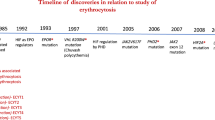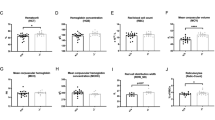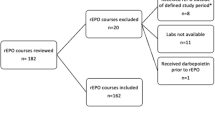Abstract
ABSTRACT: In high resolution sodium dodecyl sulfategel electrophoresis, the red cell protein, band 4.1, separates into a and b forms, which are closely sequence related polypeptides. In membranes from patients with hemolytic anemia, the relative amount of band 4.1b is increased, which has led to a suggestion that the relative proportion of these two 4.1 forms might be age dependent (Sauberman N, Fortier NL, Fairbanks GF, O'Connor RJ, Snyder LM1979 Biochim Biophys Acta 556:292-313). We have measured the relative proportions of bands 4.1a and b in the red cells of seven patients with transient erythroblastopenia of childhood. In this disease, temporary cessation of erythroid cell production occurs, and the circulating red cells represent an aged cohort of erythrocytes. At diagnosis, the band 4.1 of red cell membranes was nearly entirely in the aform, and as reticulocyte levels rose during recovery, the predominant form became 4.1b. After recovery, the a/b ratio returned to normal. A transient period of moderate reticulocytosis and high levels of 4.1a could be detected in some cases, presumably marking the beginning of the recovery phase. These results support the proposal that the 4.1 band ratio is an internal marker of cell age in the human erythrocyte.
Similar content being viewed by others
Log in or create a free account to read this content
Gain free access to this article, as well as selected content from this journal and more on nature.com
or
Author information
Authors and Affiliations
Rights and permissions
About this article
Cite this article
Ravindranath, Y., Brohn, F. & Johnson, R. Erythrocyte Age-Dependent Changes of Membrane Protein 4.1: Studies in Transient Erythroblastopenia. Pediatr Res 21, 275–278 (1987). https://doi.org/10.1203/00006450-198703000-00014
Received:
Accepted:
Issue date:
DOI: https://doi.org/10.1203/00006450-198703000-00014



